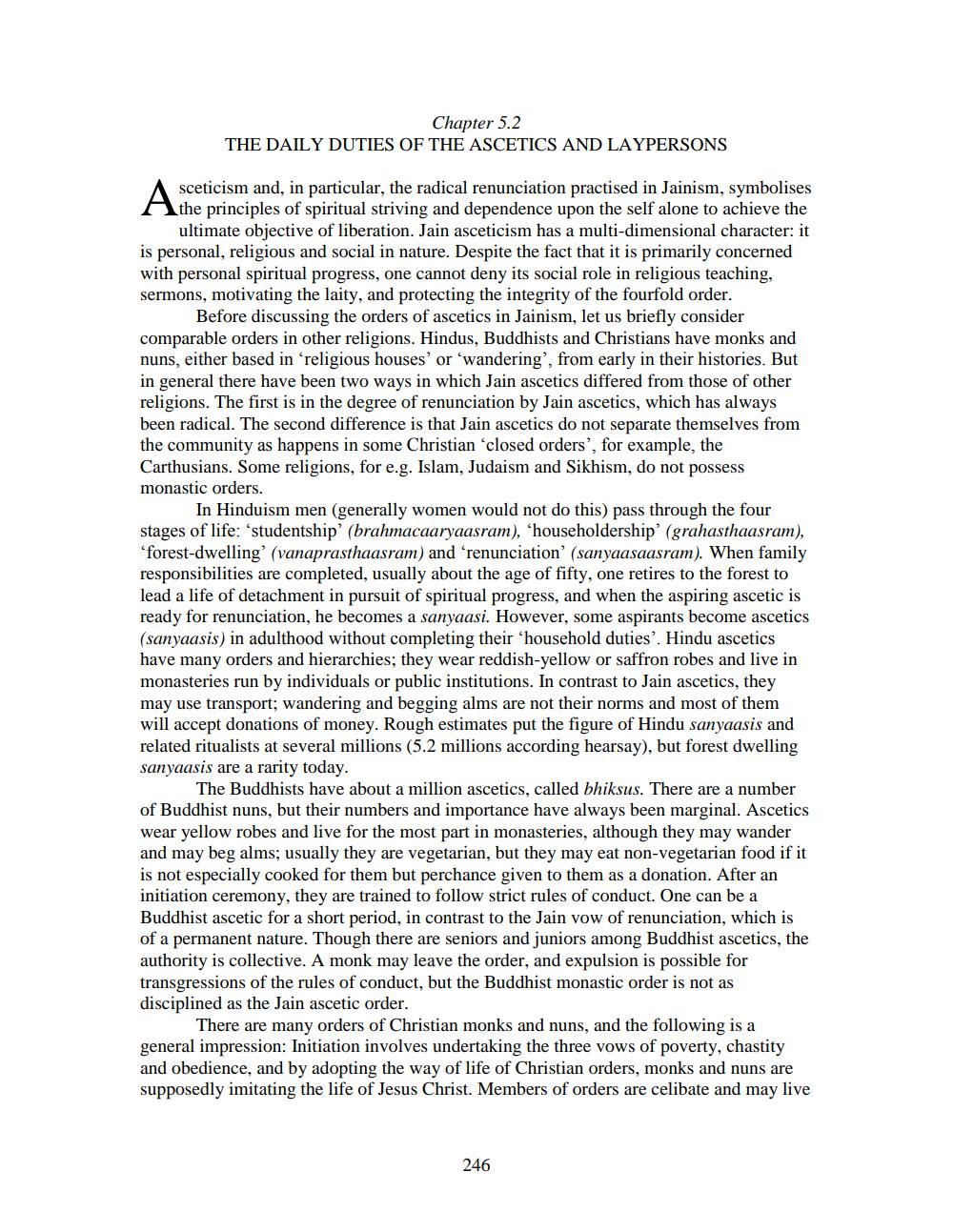________________
Chapter 5.2 THE DAILY DUTIES OF THE ASCETICS AND LAYPERSONS
sceticism and, in particular, the radical renunciation practised in Jainism, symbolises A the principles of spiritual striving and dependence upon the self alone to achieve the
ultimate objective of liberation. Jain asceticism has a multi-dimensional character: it is personal, religious and social in nature. Despite the fact that it is primarily concerned with personal spiritual progress, one cannot deny its social role in religious teaching, sermons, motivating the laity, and protecting the integrity of the fourfold order.
Before discussing the orders of ascetics in Jainism, let us briefly consider comparable orders in other religions. Hindus, Buddhists and Christians have monks and nuns, either based in 'religious houses' or 'wandering', from early in their histories. But in general there have been two ways in which Jain ascetics differed from those of other religions. The first is in the degree of renunciation by Jain ascetics, which has always been radical. The second difference is that Jain ascetics do not separate themselves from the community as happens in some Christian 'closed orders, for example, the Carthusians. Some religions, for e.g. Islam, Judaism and Sikhism, do not possess monastic orders.
In Hinduism men (generally women would not do this) pass through the four stages of life: 'studentship’ (brahmacaaryaasram), 'householdership' (grahasthaasram), 'forest-dwelling (vanaprasthaasram) and 'renunciation' (sanyaasaasram). When family responsibilities are completed, usually about the age of fifty, one retires to the forest to lead a life of detachment in pursuit of spiritual progress, and when the aspiring ascetic is ready for renunciation, he becomes a sanyaasi. However, some aspirants become ascetics (sanyaasis) in adulthood without completing their 'household duties'. Hindu ascetics have many orders and hierarchies; they wear reddish-yellow or saffron robes and live in monasteries run by individuals or public institutions. In contrast to Jain ascetics, they may use transport; wandering and begging alms are not their norms and most of them will accept donations of money. Rough estimates put the figure of Hindu sanyaasis and related ritualists at several millions (5.2 millions according hearsay), but forest dwelling sanyaasis are a rarity today.
The Buddhists have about a million ascetics, called bhiksus. There are a number of Buddhist nuns, but their numbers and importance have always been marginal. Ascetics wear yellow robes and live for the most part in monasteries, although they may wander and may beg alms, usually they are vegetarian, but they may eat non-vegetarian food if it is not especially cooked for them but perchance given to them as a donation. After an initiation ceremony, they are trained to follow strict rules of conduct. One can be a Buddhist ascetic for a short period, in contrast to the Jain vow of renunciation, which is of a permanent nature. Though there are seniors and juniors among Buddhist ascetics, the authority is collective. A monk may leave the order, and expulsion is possible for transgressions of the rules of conduct, but the Buddhist monastic order is not as disciplined as the Jain ascetic order.
There are many orders of Christian monks and nuns, and the following is a general impression: Initiation involves undertaking the three vows of poverty, chastity and obedience, and by adopting the way of life of Christian orders, monks and nuns are supposedly imitating the life of Jesus Christ. Members of orders are celibate and may live
246




